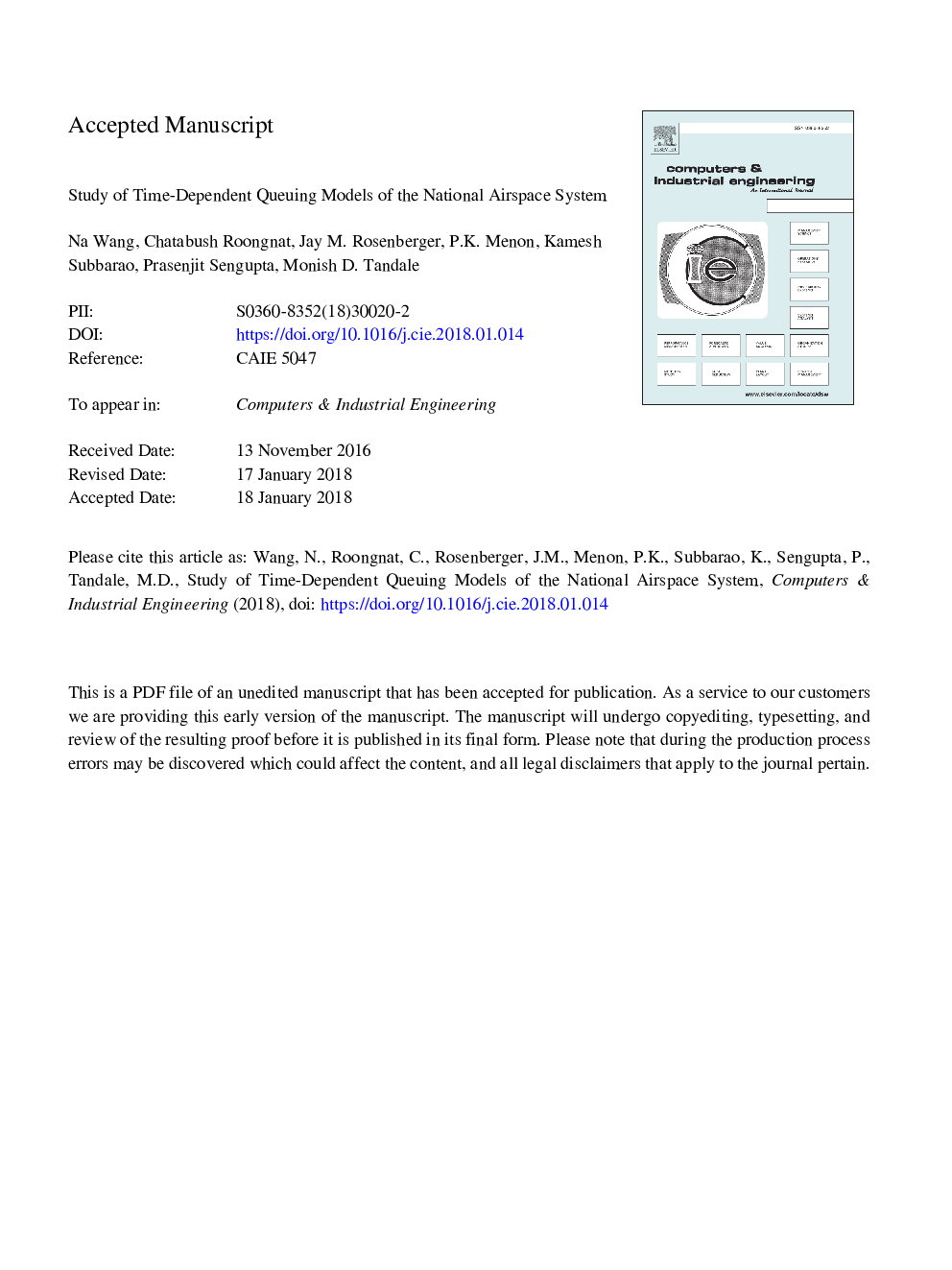| Article ID | Journal | Published Year | Pages | File Type |
|---|---|---|---|---|
| 7541386 | Computers & Industrial Engineering | 2018 | 29 Pages |
Abstract
Queuing models provide an attractive and highly-efficient alternative to simulation for quantifying traffic flow efficiency. Stationary Markovian queuing models in which both inter-arrival times and service times are exponentially distributed have been studied by the National Airspace System (NAS). However, stationary queues cannot account for peaks and valleys in demand that are commonly observed in the NAS. Thus time-dependent Markovian queuing models, which aim to capture the variation in demand during a day, have been studied. Furthermore, statistical analysis of real traffic data reveals that inter-arrival times and service times do not follow exponential distributions. As a subclass of phase-type distributions, Coxian distributions with the advantage of closely approximating any distribution without violating the Markov property, have gained special importance on research in queuing systems. In this research, time-dependent Coxian queuing models Cm(t)(t)/Ck/s/s for modeling the en route phases of flight are developed as well, which are approximated by a piecewise constant Coxian inter-arrival time distribution and a time-invariant Coxian service time distribution. Both arrival rates and service rates are calibrated from data extracted from high-fidelity simulation runs driven by actual flying data. The number of aircraft in the system is regarded as a measure of the accuracy of queuing performance. Comparison results between time-dependent Markovian and Coxian queuing models are given in this paper. This study shows that time-dependent Markovian queues capture the variation in demand as well as Coxian queues, with the advantage of mathematical and computational tractability.
Keywords
Related Topics
Physical Sciences and Engineering
Engineering
Industrial and Manufacturing Engineering
Authors
Na Wang, Chatabush Roongnat, Jay M. Rosenberger, P.K. Menon, Kamesh Subbarao, Prasenjit Sengupta, Monish D. Tandale,
